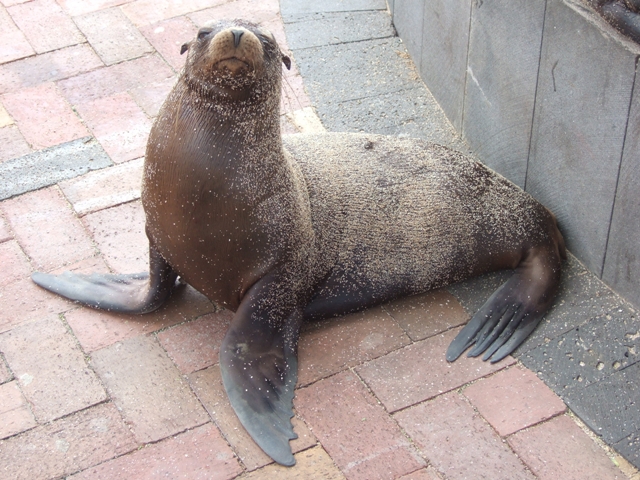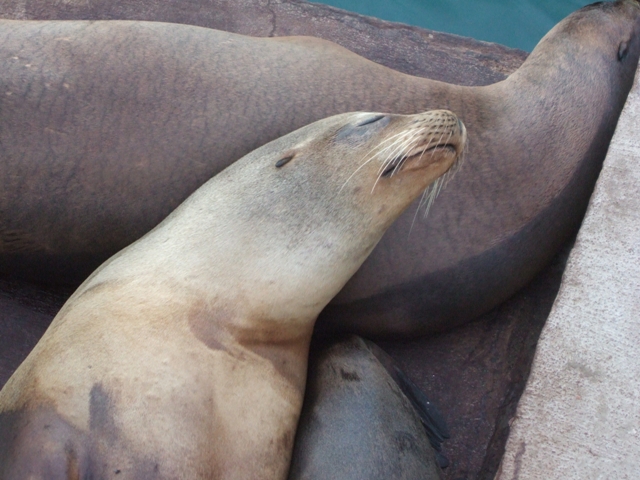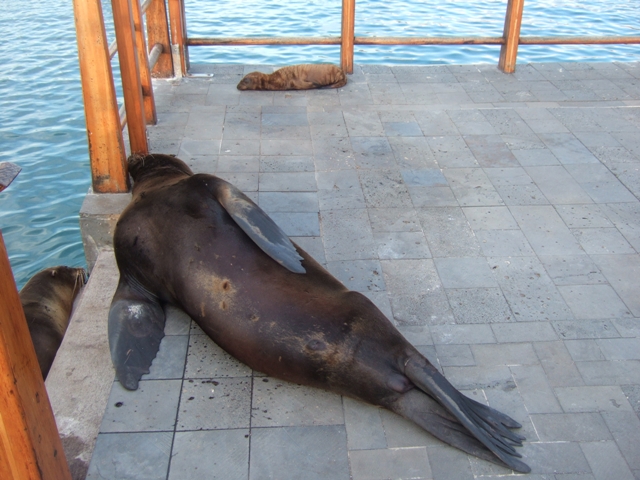First Week in the Galapagos

|
Our first week in the Galapagos has gone very
quickly. We have the boat reasonably well organised now and have all the
official checking-in completed. Part of this was to take delivery of our
cruising permit. We started the process of getting this back in November when we
had to send off copies of passports and ship's papers, and we were never sure we
would actually get one, but we did. Without a permit you can only anchor in the
port of entry and can stay for about 20 days, then you have to leave the
Islands. With a permit we can stay in the islands until 4th May and can take the
boat to 2 other islands - Santa Cruz (the centre for tourism and where
the Darwin Research Centre is) and Isabella, the biggest island. So with the
island of San Cristobal, where we are now, we hope to be able to see all that we
want to. We had planned to leave the Galapagos early April, but as this is a
relatively strong El Nino year, we may stay 2 or 3 weeks longer (now that
we have the permit we can) . When El Nino is strong, you don't want to
get to French Polynesia until well into May as the tail-end of the cyclone
season is more likely to affect the area.
San Cristobal has most of the wildlife that we want to see, but, apart from sea lions, not in the numbers that some of the other islands have. So we hope to see more as we go to the other islands. Galapagos penguins are not here and are only found on the west coast of Isabella, as that's where the colder currents are. The same is true of the flightless cormorants and we hope to see them when we get to Isabella. Wildlife we have seen so far includes sea lions, marine iguanas (on rocks and swimming and feeding underwater) blue footed boobies, masked boobies, frigate birds in courtship mode (males have big red throat pouches - frigate birds have been around ever since we arrived in the Caribbean, but we haven't seen the males in courtship mode very often), lava lizards, some of Darwin's 13 varieties of finches, Galapagos storm petrels (dainty little birds that skip and dance across the top of the water), blue heron and lava heron, flycatchers and loads of sea life - including turtles, rays and several varieties of sharks. I did 2 dives on the main dive site here and even though there was a strong current and only moderate visibility, it was like being in an aquarium with so much going on all around - eagle rays and turtles above us, stingrays below and lots of sharks everywhere - white tip, black tip and Galapagos sharks all swimming close by and in view at the same time.
The sea lions are everywhere and really playful. Walking along past the main town beach the other evening after dark, where we had seen up to 60 or so sea lions a few days earlier and thought that was a lot, there must have been well over 200 - the beach was heaving and there were a lot of young pups chasing after their mums for milk. To cap it all, yesterday we went snorkeling at one of the beaches on the south of the island (a $2 taxi ride), had the beach virtually to ourselves and swam with a group of sea lions for half an hour or so. It was in a small lagoon in quite shallow water and there were 3 very young sea lions, 2 'teenagers' and what we think was mum. They were so playful and inquisitive swimming around and playing only a few inches away from us. Snorkeling we could see it all and every so often they pushed their faces into our masks, trying to figure out what we were. It was difficult to believe they were wild and it was a real treat!
 Sea lions are everywhere along the 'promenade' and quite
happy to pose for photos!
 Sleeping is the number 1 'activity'.
 Even small pups are happy to kip on the
pavement............
 ....... but mum or dad is usually not that far
away.
 Yacht bathing platforms are excellent for sleeping. This
one stayed on even when the boat moved to re-anchor.
We have seen catamarans with 5 on!
 Swimming with sea lions - they came right up and
prodded the camera. Shame the water wasn't a bit
clearer
for the camera.
 They are so agile under the water and show no fear at
all.
|